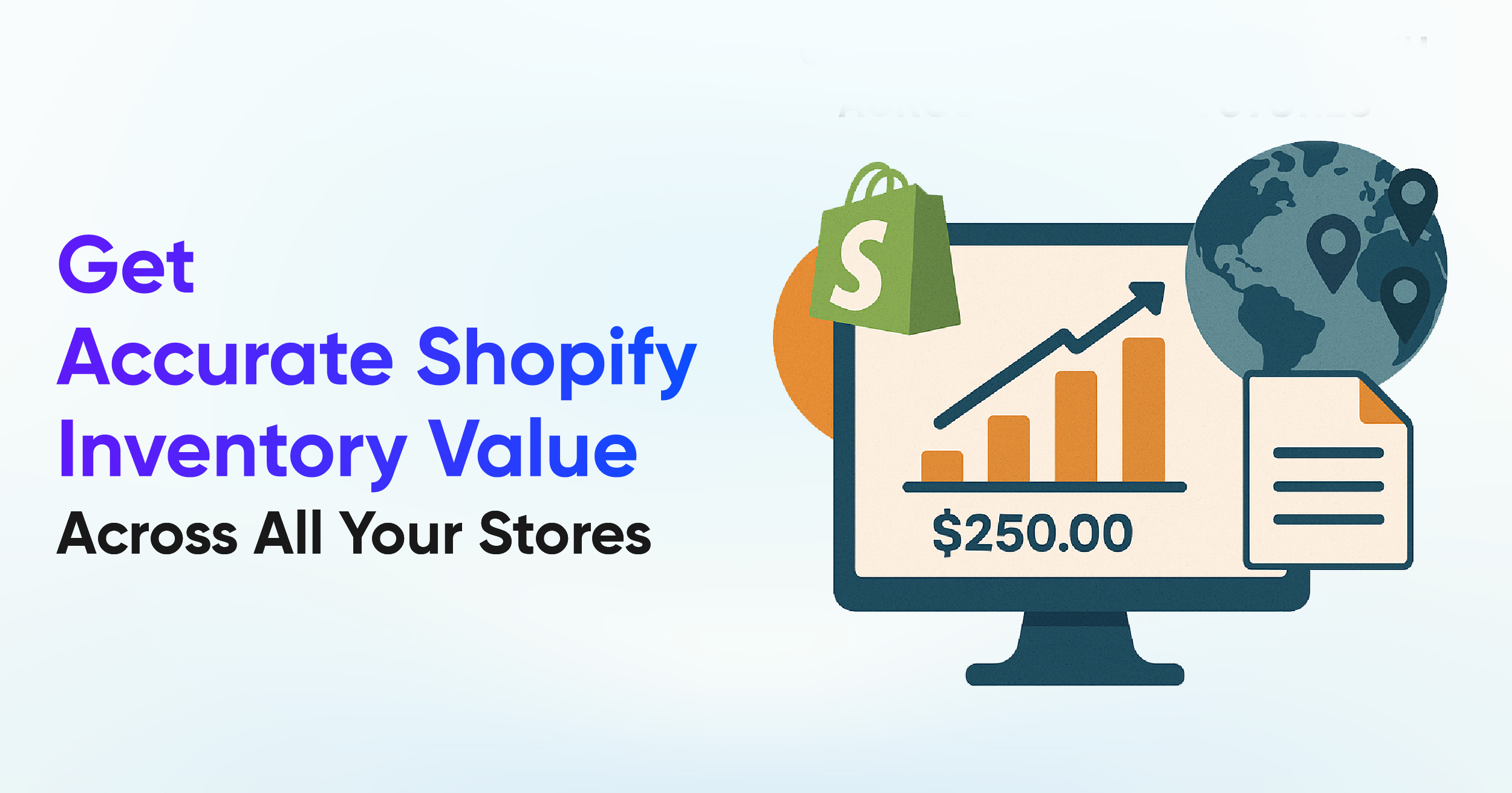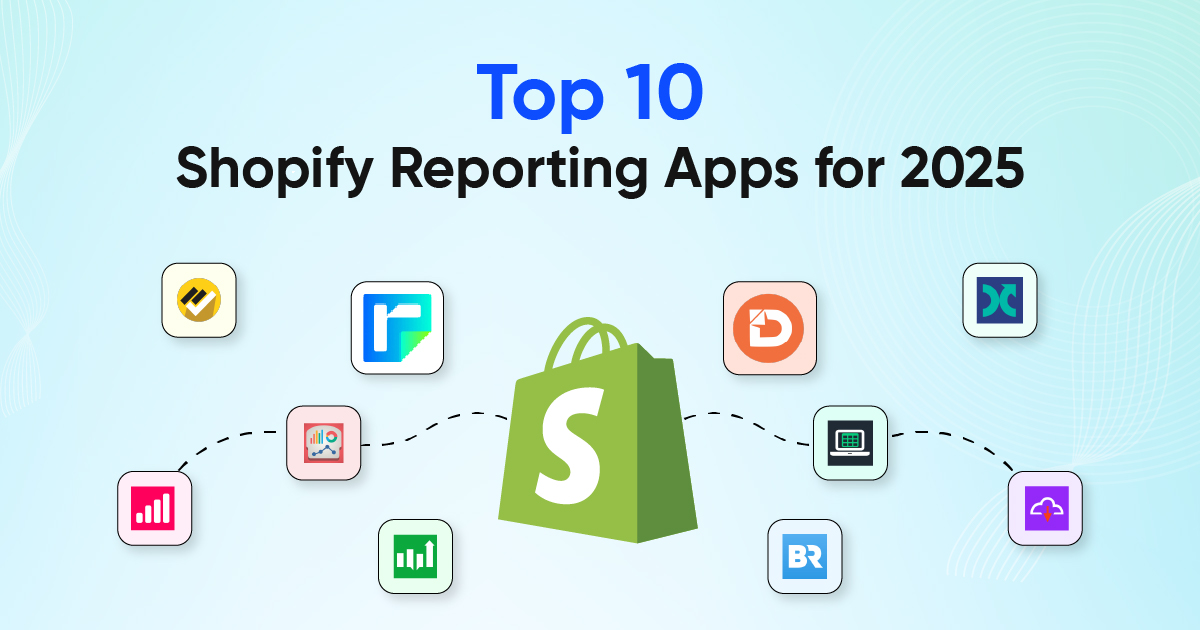Shopify Cost of Goods Sold Report to Identify Profit Margins
-%20Report.jpg)
As a Shopify merchant, it's not enough to just track your sales but also need to understand what it costs to sell your products. So, if you are unsure what to include in their cost of goods sold reports, that’s where COGS comes in. It measures the direct costs connected with producing goods or services, including raw materials, labor, and production-related data. It’s directly proportional to your revenue and plays a major role in determining your gross profit.
Tracking COGS helps you to get the actual performance of your business. It tells you whether you’re really making money or just moving inventory. Here, in this blog, we will discuss Sales and Inventory COGS. Let’s see what it includes, how it's calculated.
What Is COGS, and Why Is It Different from Other Costs
COGS represents only the expenses directly which are directly connected to the production of goods you sell. This is different from operating expenses like rent, electricity, and marketing, or fulfillment costs like packaging and shipping.
For example, if you sell handmade candles, your COGS would include the wax, wick, fragrance oils, and the labor used to make each candle.
Note- Once a product is sold, its cost is moved from inventory to your income statement as Cost of Goods Sold. Subtracting COGS from your net sales gives you your gross margin.
Gross Margin = ([net sales - COGS] / net sales) * 100
Gross Profit = (Net sales - COGS)
This makes it one of the biggest and most critical numbers on your income statement. The basic purpose of calculating COGS is to identify the right cost of goods sold during a period - it excludes non-sold items.
Types of COGS: Sales vs. Inventory
There are two ways to look at it:
- Sales COGS – This includes the cost of items you’ve already sold.
- Inventory COGS – This relates to the cost of items that are still in stock and sold, which helps to calculate the profit margins.
COGS Formula in Sales Reports
COGS = Cost per Item × Net Quantity Sold
This helps you to find out the total amount that is spent in producing the products you’ve actually sold, not just purchased or stocked.
COGS Formula in Inventory Reports
(Beginning Inventory + P) - Ending Inventory
Where P stands for Purchase
This helps you find out the products that are being sold and remaining in stock.
View Profit Margins for Unsold Products
Many merchants want to see projected profit margins, including cost per item, retail price, profit, and margin, even before a product is sold.
Currently, this feature is available in apps like Report Pundit, Data Export, and others. And that report type is called Product Variant. It shows inventory cost and helps you estimate profits across your entire product range.
In addition, we provide details such as inventory value. These figures define the total selling value of the products you have, including expenses like manufacturing and labor.
The formulas for Inventory Value and Inventory Cost:
Inventory value = Inventory on hand * product price
Inventory cost = Cost of the product * Current Inventory
Why Tracking COGS on Shopify Is Crucial
Keeping track of it helps you do far more than just understand profits. Here’s why it matters:
- To ensure your prices cover production costs and maintain competitiveness.
- To calculate gross profit margins by comparing revenue with direct costs.
- You can focus on top-performing products and discontinue low-margin items.
- To make business decisions by knowing when to switch suppliers.
- To understand your profit, first you need to understand your cost.
- Avoiding incorrect COGS reporting can lead to inflated profits and wrong decisions.
- Accurate financial reporting boosts your credibility with lenders and investors
Where to Find the COGS Report in Shopify
Shopify provides a COGS report mainly focused on Inventory. But if you want fields like cost per item and profit margin, here’s how you can find them:
- Go to Shopify Admin
- Click on Analytics
- Select Reports
- Under Finances, look for the Profitability Report (if enabled)
- If COGS isn't showing, manually input the Cost Per Item for each product in the product section, so that it will be calculated for the upcoming sold products, not for the already sold ones.
To explore more, you can refer to this video link as well: How to use Cost Per Item Manually
Understand Your COGS with Report Pundit
Report Pundit provides a pre-created COGS report focused on sales. This includes:
- Date of sale
- Order name
- Product/ item cost
- Net quantity sold
- Total cost
- Gross margin
- Gross Profit
- Total sales
Report Pundit gives you a complete view of your inventory and COGS, along with other financial data like profit margins, sales trends, and payment breakdowns. You can also track returns, discounts, and taxes in one place for accurate cost analysis.
Impact of Inventory on COGS
Most businesses don’t track every item individually. Instead, they use inventory valuation methods like FIFO (First In, First Out) or LIFO (Last In, First Out) to calculate.
Under FIFO, COGS includes the oldest inventory costs, while under LIFO, it includes the most recent ones. For example, say a company makes four units - two at $4 each and two at $8 each. If they sell three units, FIFO would count the first two at $4 and one at $8, making COGS $16. LIFO would count the two $8 units and one $4 unit, making COGS $20
The method you use can significantly affect your profit figures:
- Higher COGS → Lower profit
- Lower COGS → Higher profit
Some businesses may even try to misunderstand profits by choosing any method that changes COGS, and later may not reflect the real financial report. So they can choose FIFO for better understanding.
Why Getting COGS Right Is Important
It is important because wrong calculations can lead to issues like overpaying taxes, distorted profit margins, and poor pricing decisions. The right COGS values help you understand your true costs, helping you set the right prices and maintain a clear view of your business’s financial health. It also gives you better control over expenses and helps you plan inventory and cash flow more effectively. Overall, accurate COGS is the foundation for smart growth and long-term profitability.
Conclusion
The best way to track COGS depends on your business. If you manage a large inventory, the inventory method gives a clearer view by tracking stock changes. For fast sales cycles or made-to-order products, the sales method is simpler as it calculates COGS based on what you sell.
Both methods have their strengths. Inventory-based COGS offers precision and long-term clarity, while sales-based COGS is great for speed and flexibility. The key is choosing the approach that aligns best with your operations, so you can stay on top of your costs and make smarter business decisions
Common and Related Questions On COGS
1. Are salaries included in COGS?
Not usually. Salaries fall under operating expenses. However, direct labor costs are those connected specifically to product creation and can be included in COGS.
2. How does inventory affect COGS?
It only includes the cost of items that were sold. So, the way you use inventory, such as FIFO or LIFO, affects how much cost is recorded.
3. How is COGS calculated?
Sum up all direct costs to make the product, such as materials, labor, rent, and all. Only count costs for items that were sold.
4. What are the limitations of COGS?
Your COGS may go wrong if costs are assigned to the wrong products or if some costs are not applied at all.

Build and automate your Shopify Reporting
Unlock the full potential of your Shopify store with Report Pundit. Gain access to over 2000 data fields, automate reports, and make data-backed decisions to grow your business.

.svg)
.svg)
.svg)










